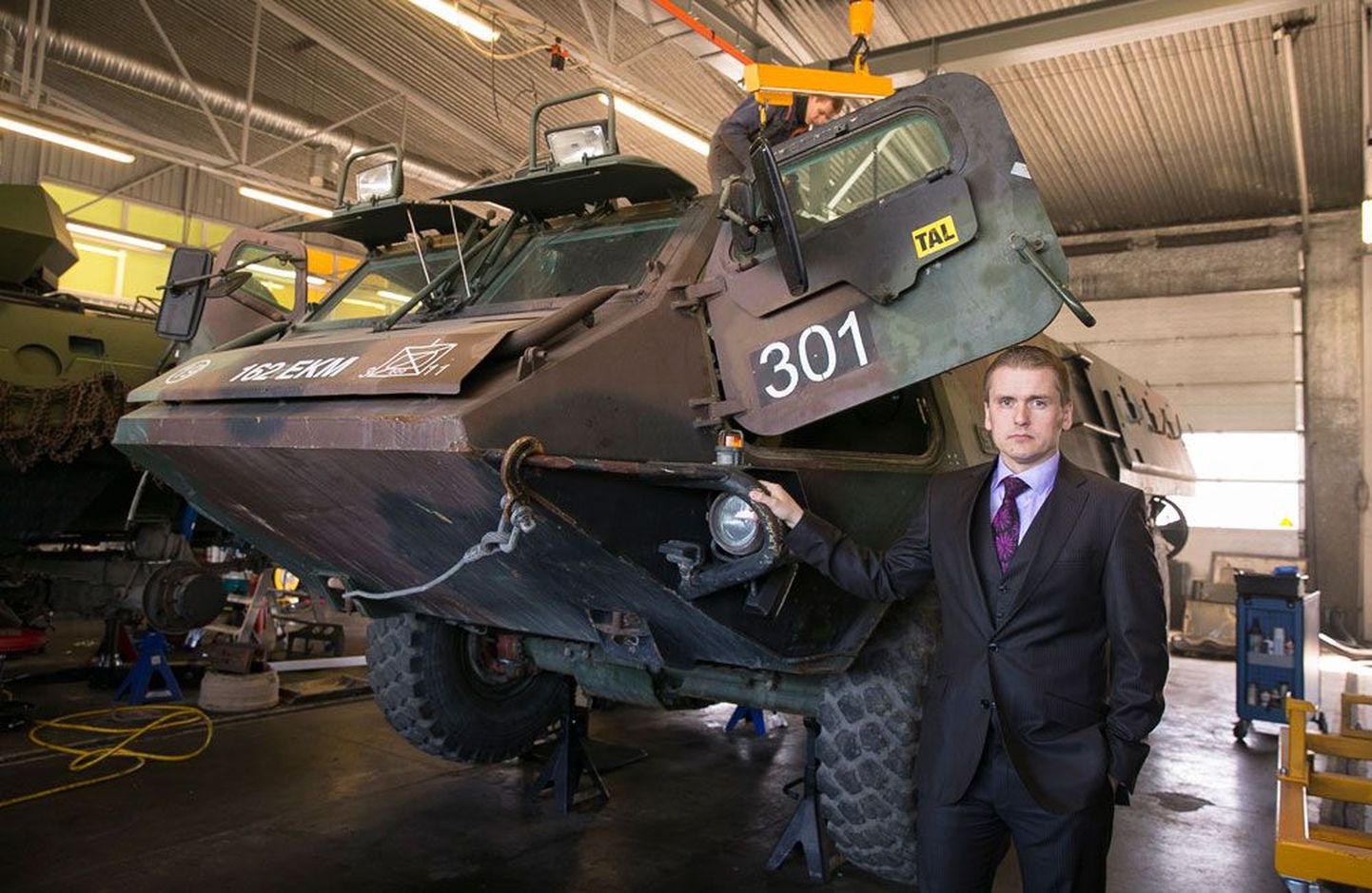
By winning repair procurement for Defence Forces’ SISU armoured vehicles last year, bus company Sebe got a boost so powerful as to start building new military machines of its own.

By winning repair procurement for Defence Forces’ SISU armoured vehicles last year, bus company Sebe got a boost so powerful as to start building new military machines of its own.
«We founded a defence technology oriented company Milrem, focussed on developing competence in military technology. We are producing vehicles upgraded into mobile command posts; we are developing driverless crawlers suitable for rescue and military tasks,» said Sebe board member Kuldar Väärsi.
Army boot no trendy stuff
As the Defence Forces next year get their tank-like infantry combat machines CV9035, the bus company is again intending to participate in repair procurement.
«With repair services for military equipment, we will not limit ourselves with the Estonian market; rather, we will also target procurements in friendly neighbouring countries,» said Mr Väärsi. «As the Latvian army purchases the armoured vehicles CVR(T), we will compete at their repair and maintenance procurement as well.»
Repair and maintenance of military technology provides for up to a fifth of Sebe’s repair shop turnover, which is not repairing Sebe’s own buses alone, but also those of Nordic bus companies.
Estonian Defence Forces being small, not even a mid-sized industrial company can bank on local military orders only. Of the €4m turnover of our largest footwear maker Samelin, 70 percent comes from army boots; meanwhile, army boots sold in Estonia provide for a mere fifth of the turnover.
In the 1990ies, Samelin for a long period lost orders by Estonian Defence Forces; now, thanks to success at Norwegian defence procurements, the company is again able to produce footwear for our own soldiers.
«In the 1990ies, we were not able to keep step with time, and, due to outdated product development, we missed the local procurements,» said Samelin’s owner Leida Kikka. «Then, the company which made boots for the Norwegian army, started subcontracting from us, bringing us their equipment. Technologically, we became so capable that now it is us that make boots for Norwegian defence forces.»
Making army boots is complicated due to extremely high quality requirements, making it impossible for producers to play with production cost using cheap materials. But then: army boots are outside the fashion trends.
«Never do we have soldiers coming and complaining that, as compared to last summer, our lasts are hopelessly out of fashion,» added Ms Kikka.
Bag-maker Galvi-Linda gets 40 percent of its close to €2m turnover from international military market; even so, the Estonian army’s share is small.
«The military harness produced by us does not wear out as fast as boots of uniforms, so the demand in Estonia stays meagre,» said board member Marge Laiõunpuu. «But though the volume of their procurement is small, their order is very encouraging for our company and has substantially enhanced entering foreign markets.»
Meanwhile, numerous Estonian companies can’t get a hold of the defence procurements as these are geared towards the cheap price. Thus, the soldiers need to do with imported socks of not-the-best quality, though the Estonia’s largest sock factory Suva could offer much better socks.
«So far we have failed at the Defence Forces’ procurements, as they favour imported socks,» noted the factory owner Viktor Saarestik.
Despite the sharp competition at the procurements, entrepreneurs praise the way defence ministry procurement team operates. According to their estimation, defence ministry is able to organise their procurements with more transparency and logic than even their colleagues in the Nordic Countries.
«Over these past couple of years when the officials dealing with procurements have started to stay longer on their posts, one can feel that the ministry has turned their face towards the entrepreneurs on,» said Estonian Defence Industry Association chief executive Anu Eslas.
«What we appreciate most is how the ministry provides advice how our enterprises could break through on export markets.»
50 percent Made in Estonia
Defence minister Sven Mikser called upon Estonian companies to actively participate in this year’s €111.5m defence procurement.
«The defence ministry is interested in a strong domestic defence industry which would be for us a capable and efficient partner. When it comes to national defence capabilities, defence industry is a vital sector, because a strong domestic defence industry guarantees the needed services and products even in a crisis or war,» said he.
«The law does not allow to direct procurements towards Estonian companies alone. The solution is in competitiveness – the stronger our defence industrial enterprises, the greater the likelihood that they are able to compete in the domestic defence procurements,» added the minister.
Current experience shows that Estonian industrialists are able to grab up to 55 percent of defence procurements – that’d make €61m plus, this year.
Defence Forces biggest procurements
In 2014, lion’s share of the €111.5m procurement plan goes towards war-time supplies.
• €45m – communications equipment, means of transport, ammunition, pioneer equipment, night vision devices, artillery and mortar fire guidance equipment, uniforms, harness, bullet-proof vests.
• €14m – repair and maintenance services for weapons, vehicles and other equipment.
• €13m – ammunition, anti-tank rockets, uniforms, and explosive for training.
• €6m – instalment for mid-range radars Ground Master 403.
• €6m – instalment for SISU armoured vehicles XA-188.
• €3m – equipment for Defence League territorial defence units.
Source: ministry of defence